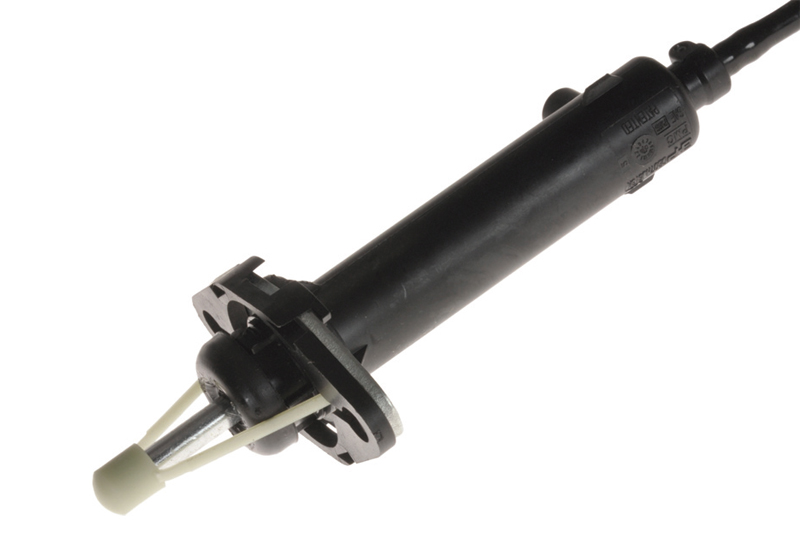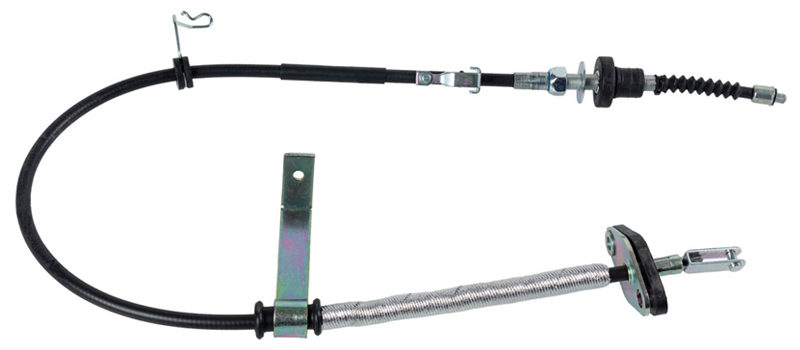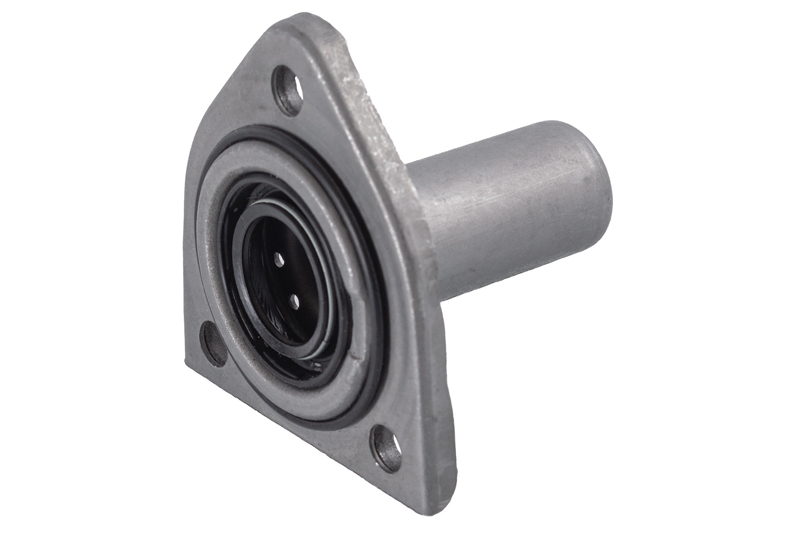
Febi highlights some common clutch issues and points to the solution.
Clutch hydraulic circuit bleeding
Models
Jeep Cherokee, Grand Cherokee, Wrangler/Chrysler PT Cruiser, Neon, Voyager, Grand Voyager
Fault
Unable to purge the air from the clutch hydraulic circuit. Therefore, resulting in no clutch operation.
Cause
The clutch hydraulic circuit is not equipped with a bleed nipple for purging the air, which maybe trapped in the system.
Solution
The following procedure is a guide to bleeding the clutch hydraulic circuit to ensure correct operation.
The new clutch slave cylinder plunger, is fitted with a plastic retaining strap. DO NOT remove this strap prior to fitting. It is designed to retain the slave cylinder plunger until it is fitted, at which point it will breakfree when operated for the first time, drawing fluid into the cylinder. After fitting a new clutch hydraulic component, fill the clutch master cylinder reservoir with the manufacturer’s recommended fluid. Then pump the clutch pedal 60–100 times.
If the pedal still feels spongy or the clutch does not fully disengage, excessive air is still trapped within the system and you will need to perform the following procedure:
- Unbolt the clutch slave cylinder assembly from the transmission housing, but do not disconnect the hydraulic line.
- Note: DO NOT operate the clutch pedal whilst the slave cylinder is detached from the transmission housing, as this will damage the slave cylinder.
- Allow the slave cylinder to hang, making it the lowest part of the system.
- Depress the slave cylinder pushrod until it reaches its stop and then release. Repeat this at least 10 times, as this will force trapped air up and out of the system.
- Re-fit the slave cylinder to the transmission housing.
- Check and top up the clutch master cylinder, fluid level as necessary.
- Pump the clutch pedal 30 times.
- If the pedal still feels spongy or the clutch still does not fully disengage, repeat the procedure until all air is purged from the system. It is sometimes necessary to replace both the clutch master and slave cylinders in order to fully bleed this system. If you are only replacing one of them and are still experiencing difficulties after several attempts at purging air from the system, you may need to replace the other cylinder too.
PROTips – Blue Print ADA103601, ADA103602, ADA103603, ADA103605, ADA103607, ADA103609, ADA103610

Clutch cable
Models
RHD Hyundai i10 2007 > 2013
Fault
The vehicle has difficulty engaging first or reverse gear, and has an inconsistent ‘biting point’ when depressing the clutch pedal. These issues can result in noise coming from the gearbox area, giving the impression of a possible clutch fault.
Cause
The clutch cable is routed around the back of the engine for righthand drive vehicle applications. Over time, water and road debris can ingress into the cable and flush away any lubricant, which can cause rust to form on the cable. This is most notable at the end of the cable, where it connects to the clutch pedal.
Solution
Before replacing the clutch cable, check the condition of the pedal box – paying attention to the area where the pedal box is attached to the body and where the clutch cable passes through it, because it is an area known to fracture. This is due to excess stress caused by the faulty cable. The pedal box must be repaired or replaced before continuing. Once satisfied that the pedal box is in good condition, disconnect the clutch cable and replace it with a new Blue Print clutch cable – ADBP380001. Adjust the cable, as required, to the desired clutch pedal height of 178mm. This should be measured from the floor to the centre of the clutch pedal. Check the ‘free play’ of the clutch pedal; this should measure 10-15mm before resistance is felt as the clutch pedal is depressed. Where the clutch cable attaches to the clutch-actuating arm, this should have 2-3mm of ‘free play’ and can be adjusted using the barrel connector. Check that the gearbox oil is at the correct level and top-up as necessary, then carry out a road test to check the operation of the clutch.
PROTips – ADBP380001

Guide sleeve for clutch
Models
Various Citroen, DS, Fiat, Lancia and Peugeot models
Function
The clutch release bearing slides smoothly along its length, allowing the clutch to engage or disengage. It is built into the gearbox and houses an oil seal to protect the clutch assembly from the ingress of transmission oil.
Cause of Failure
Wear can occur over time on the guide shaft as a result of prolonged engaging and/ or disengaging of the clutch. This can be accelerated if an incorrect lubricant was used during a clutch replacement. In addition, excessive build-up of dust and debris restricts the smoothness of operation which can also lead to wear. Reusing a worn guide tube can cause clutch engagement and/or disengagement difficulties. The oil seal can become contaminated with generated dust as the clutch wears. If the seal fails, the gearbox oil can cause the clutch to slip. It is recommended that the guide sleeve be checked for wear and replaced as necessary when the transmission is removed for any repair work or clutch replacement.
New Product Highlight – ADBP330000









